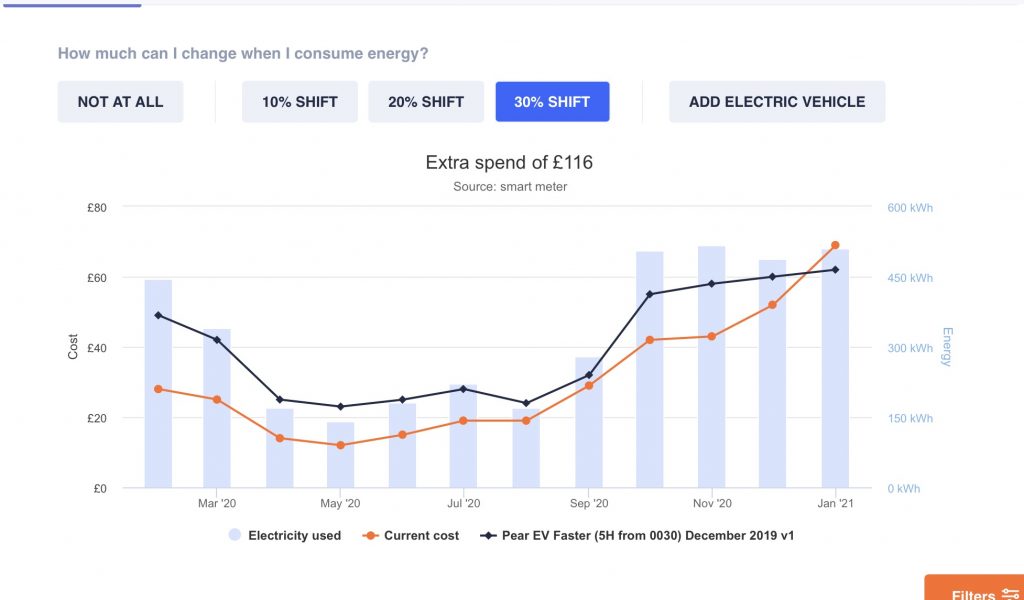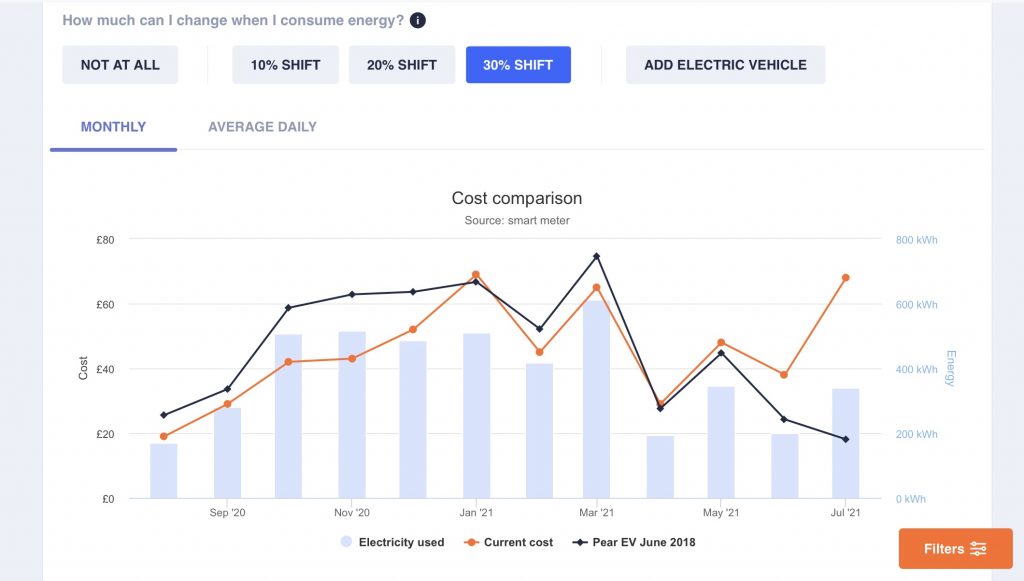Back in February I previewed a new online tool to help consumers choose an appropriate smart tariff in Making smart choices – smart tariff smart comparison. There are numerous price comparison sites that work for standard energy tariffs, but smart tariffs are generally excluded from such sites. Price comparison sites typically ask for a token meter read or guess consumption based on typical bills for similar homes, but this online tool takes actual half hourly consumption from your own electricity meter so its analysis is very sophisticated in comparison. As a research tool the tariff names are anonymised, although with a little thought they can be decoded.

The above graph shows my prior Octopus Agile tariff being very competitive for an extended period but then losing top spot in January 2021 to an Octopus Go Faster tariff. Subsequently I’ve moved to a related tariff called Octopus Go (without the ‘faster’). The Go tariff offers four hours of electricity overnight at 5 p/kWh for a fixed period while the ‘faster’ derivative offers 5 hours at a slightly higher price and with choice of the discounted hours.

The newer graph above shows a widening gap over the last three months with the Go tariff being increasingly advantageous as rising wholesale prices force Agile pricing higher and higher. Since Agile is linked to the daily wholesale markets the price can rise (and drop) very quickly. Go on the other hand is not just cheaper but fixed for a year. July’s analysis shows Go being less than a third of price of Agile for my usage.
Go is ideally suited for EV charging. You could also get a sign-on bonus of £50 by clicking this link to move to any Octopus tariff.

